What is Bhairavasana (Formidable Pose)

Bhairavasana, or Formidable Pose, is a hatha yoga reclining asana known as Kala Bhairavasana. Just like in Vasisthasana, the body is balanced on one of the straight legs and one arm; something very similar is also performed in other variations like Supta Bhairavasana.
As per Hindu scriptures, Bhairava is one of Shiva’s eight incarnations. This pose is also known as Akusana, or elephant goad stance in old yoga texts. Bhairavasana is a position also mentioned in Ashtanga yoga’s third series.
Overview & Etymology
Overview
Bhairava means "Formidable,” Kala Bhairava is the name of the Hindu God Shiva in his avatar as the universe’s destroyer, and Asana means "posture" or "seat" in Sanskrit.
According to Hindu mythology, Shiva’s fingernail was the origin of Bhairava, who represents Shiva’s mighty destruction principle.
Bhairava cut off one of Brahma’s five heads because he became arrogant and took over Shiva’s responsibilities. Thus, Bhairavasana is said to be a reminder to keep the ego in check because in this asana the leg appears to be about to cut off the head.
This yoga asana was first illustrated in the 19th century Sritattvanidhi text, in which the stance is known as Akusana, which comes from the Sanskrit word Aku, meaning elephant goad.
Sanskrit Name: भैरवासन Pronunciation: bhaee-RAVA-aa-sanuh
Pose Type: Ground Balance Pose Also known as: Formidable Pose
Strengthens: Neck, Legs, Core, Groin, and Arms.
Stretches: Legs, Hamstrings, Hip-Flexors, Core, Arms, Glutes, and Groins
Health Benefits of Bhairavasana
Relaxes and calms the nervous system.
Helps with digestion by toning the abdominal organ.
It provides a wonderful stretch to the oblique muscles.
Stretches the hip flexors and leads to the opening of glutes.
Helps the knees and ankles to get flexed and strengthened.
Holding this posture also stretches and massages the abdominals.
Extends the upper back muscles and improves vertebral column flexibility.
When to Avoid Performing Bhairavasana?
Avoid it during pregnancy and menstruation.
Avoid if you have a hip, neck, or spine injury.
Avoid if you have serious high blood pressure and heart problems.
How to do Bhairavasana (Formidable Pose)
Before starting Kala Bhairavasana practice, read about details related to all four phases of performing this asana. These phases include warm-up, posture steps, relaxation, and tips to keep in mind. Now, let’s get started with our practice.
Part 1 - Preparation for Bhairavasana
Here is a list of yoga poses that will help you gain more flexibility and strength for the final Formidable Pose practice:
1. Utkata Konasana (Goddess Pose) - This pose is also known as the Fierce Angle Pose, and it's a powerful intermediate standing yoga pose. The Goddess Pose can be included in Bhairavasana warm-up phase to open hips, chest, inner thighs, and groin muscles. Plus, regular practice of this pose will also help correct body posture and sculpt your inner thighs.

2. Phalakasana (Plank Pose) - In this pose, the body is held in a plank-like position, thin and long. The muscles of the core and shoulders are highly emphasized in Plank Pose, making it easier to find your core and arm balance in Kala Bhairavasana.
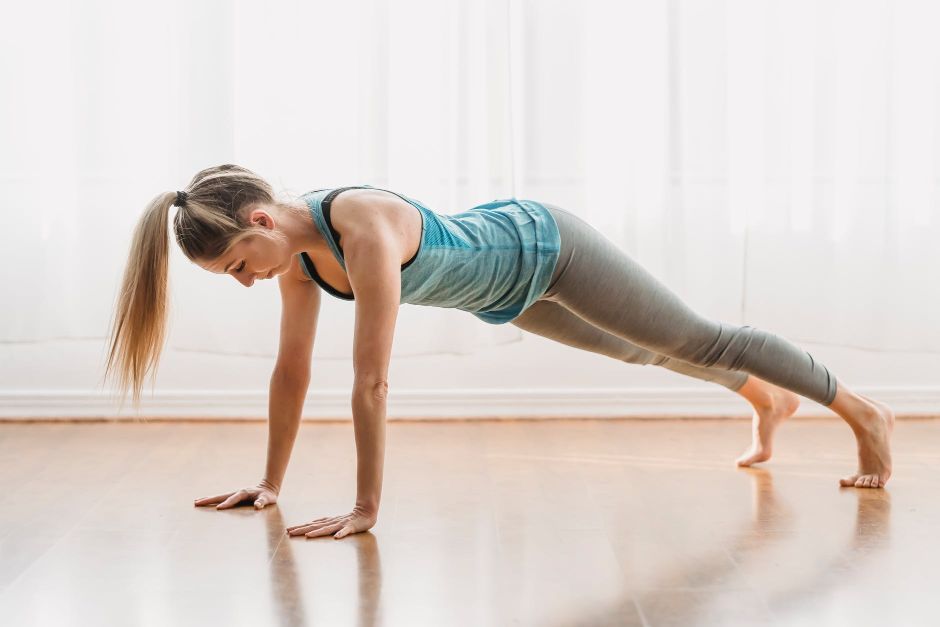
3. Malasana (Yogi Squat) - The Formidable Pose practice requires you to flex deeply and stretch around the groin muscles. Many yoga practitioners (especially males) feel super tight around the groin area; so, Malasana is an excellent posture to improve blood circulation and muscle flexibility around those areas.
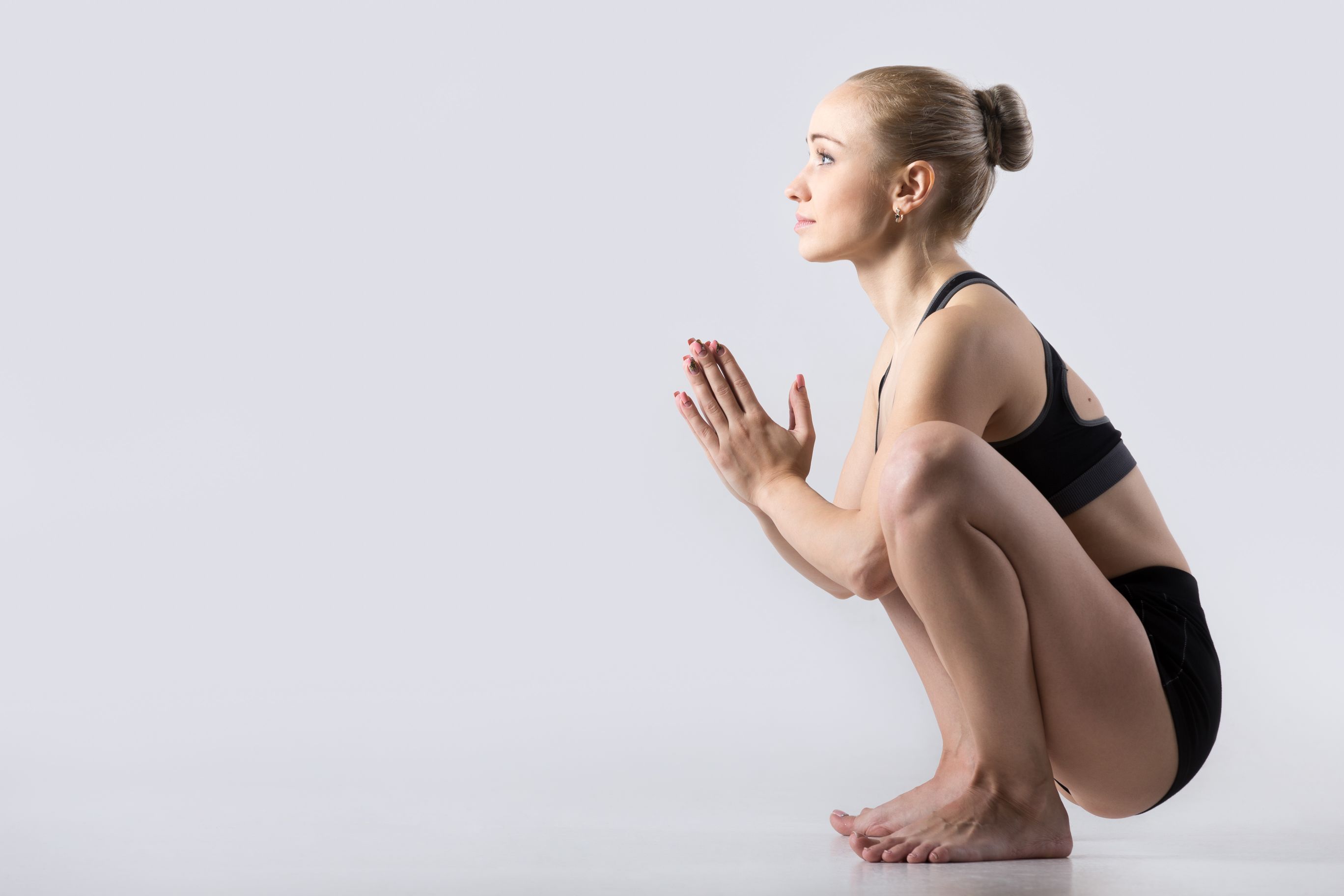
4. Camatkarasana Variation (Wild Things Pose Knee to Floor Variation) - If you are just a beginner, the reclining one-legged Bhairavasana will test your balance and might be challenging for the core. So, it's good to warm up in Wild Thing Pose with a variation of keeping one leg on the ground.

Image Credits: jivayogalive.com
Once you feel comfortable getting both legs up, you can balance in the full Camatkarasana position and prepare for the final Formidable pose.
Part 2: Step-by-Step Instructions to Perform Kala Bhairavasana
To avoid injury and reap the most out of your practice, read all the below-mentioned step-by-step instructions to perform Bhairavasana:
Step 1- Sit down on the mat in the Staff Pose (Dandasana), and stretch both legs forward.
Step 2- Bend the right knee and hold the same leg’s foot with both hands.
Step 3- Inhale deeply, raise the right leg with the help of your arms, lift the leg upwards and place it behind the neck.
Step 4- Once the leg placement behind the neck is comfortable and not hurting, keep both hands on the side and lift your body from the mat. (Keep breathing normally here).
Step 5- Now, get into a plank position with both hands on the ground and balancing the core on one leg.
Step 6- As the breath intensifies, breathe in deeply and raise the left hand from the mat.
Step 7- Now the pose is balancing on one leg and one arm, and here one must try to breathe normally throughout the hold.
Step 8- Exhale deeply and get back in the one-legged plank by bringing the left arm on the ground.
Step 9- Continue normal breathing and sit back on the ground with both arms on the sides.
Step 10- Inhale and slowly raise your hands to unwind the leg from behind the back.
Step 11- Exhale deeply once the posture is all released. Rest for a few seconds and repeat the same on the left leg.
Performance Duration for Beginners: Hold Bhairavasana on each side for 10 to 20 seconds.
Performance Duration for Advanced: Hold Bhairavasana on each side for 30 to 90 seconds.
Part 3: Things to Keep in Mind
If you want to make the Formidable Pose experience more beneficial, follow these added words of caution during the final practice:
Pay attention to your breathing: This is a challenging yoga asana, so it is crucial to be mindful of your breathing. If a beginner yogi is not aware of the proper breathing technique, there’s a high chance that they won’t be able to balance this posture. The more conscious you are about breathing the right way, the faster you’ll be able to balance.
Do not over-stretch: Overstretching can cause unnecessary wear and tear around muscles. Therefore, if your body feels uncomfortable (especially around the groin and neck) holding this posture on one leg and one arm, unwind immediately and stop the practice there.
Part 4: Relaxing Poses After Bhairavasana
It’s very important to rest your lower body and decompress the build-up of tension around the spine after your Bhairavasana practice. Here is the list of follow-up relaxing yoga postures that you can follow:
1. Kapotasana Variation (Pigeon Pose Sleeping Variation) - Start from Down Dog and flex one leg up and hold it up for a few seconds. Now bend the knee, sit down on the mat, and place the same leg forward, while keeping the other leg engaged and stretched at the back.
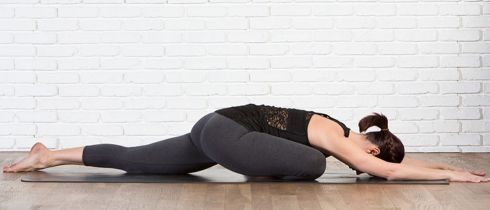
Image Credits: fixthelife.com
Now, get down low by putting your head on the ground and the abdomen onto the forward leg. While you’re here, relax your groin, glutes, and hip flexors. If possible, you can stretch out your arms forwards and feel even more relaxed around your shoulders and neck.
2. Paschimottanasana (Seated Forward Fold) - Continue relaxing the shoulders, neck, and hamstrings by sitting in a forward fold posture. Sit down in Dandasana and flex your toes facing towards you.
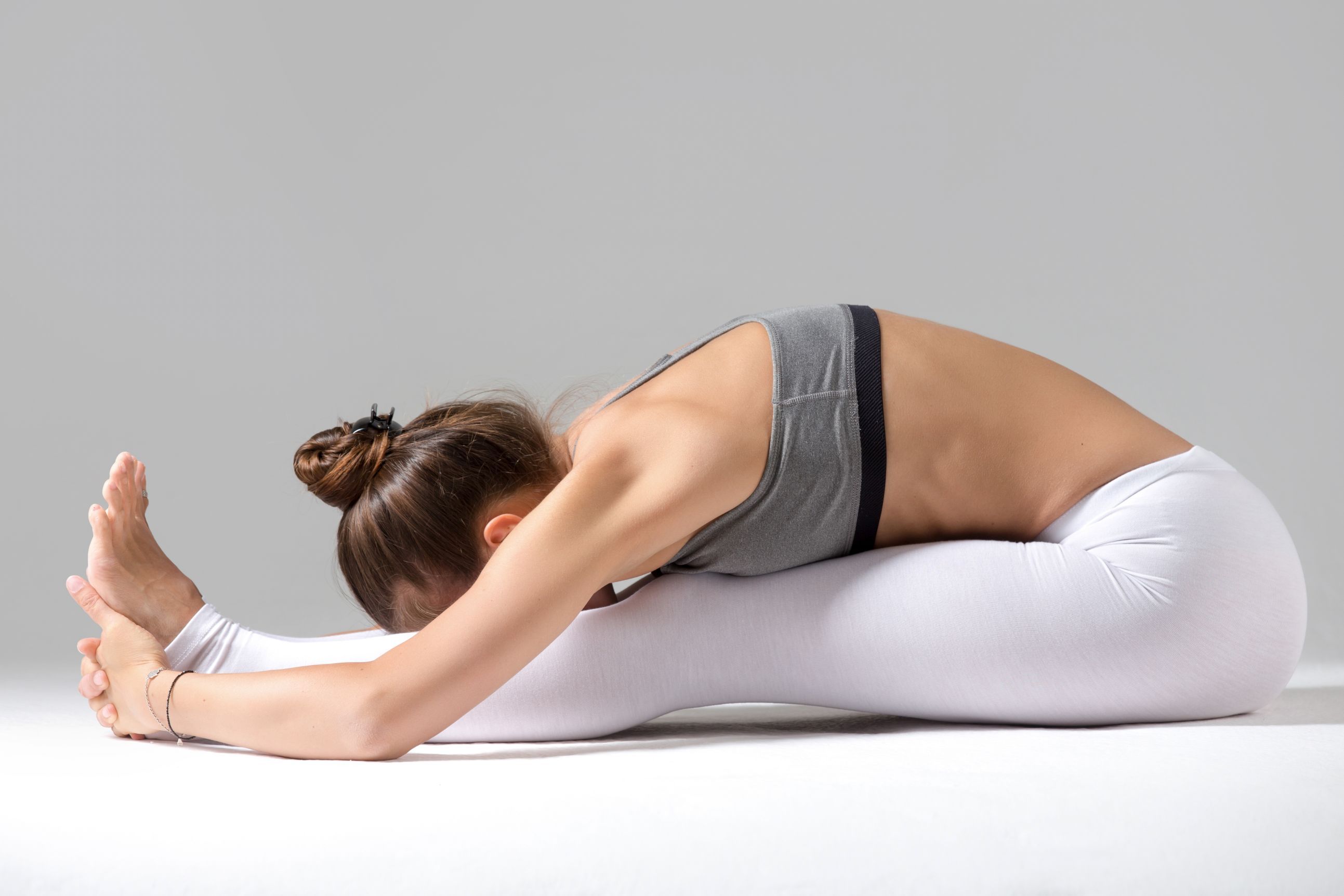
Inhale deeply, raise both arms above you first, and then lower down with your chest resting on the knees. Here, stretch both your arms forward and keep breathing consistently. In addition to relieving stress from the upper body and hamstrings, this pose will also aid in digestion and kidney function.
3. Savasana (Corpse Pose) - Finally, get into the Corpse pose as this pose will help you release excess tension left untreated in any part of the body. This pose will assist each muscle beyond simple relaxation by lowering the blood pressure and heart rate.
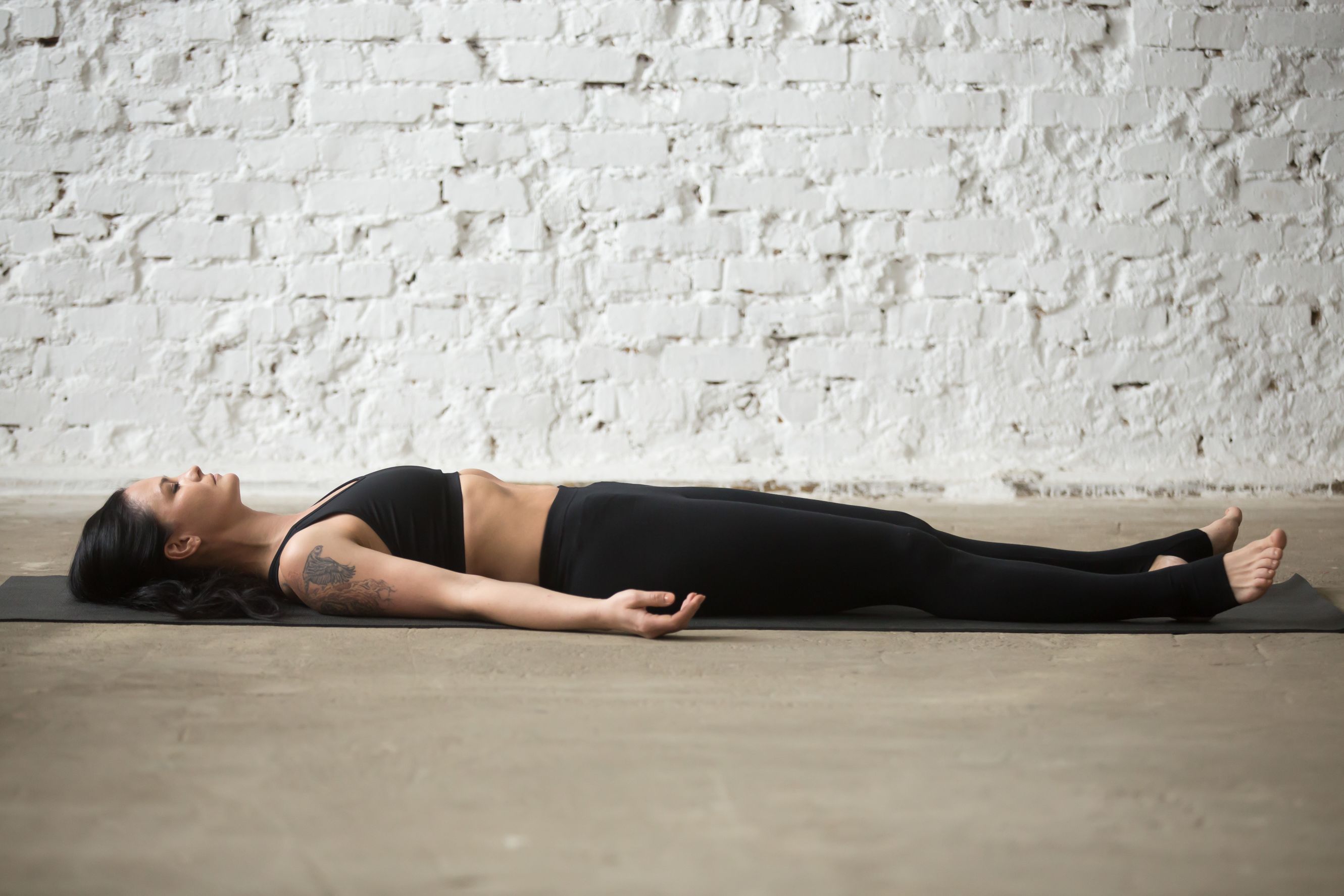
Make sure your breathing is consistent, deep, and conscious. Close your eyes and dive into a deep meditative practice, preparing your body for a semi-sleep session.
Bhairavasana Variations to Consider
There are not many variations for Bhairavasana, but you can consider adding this variation to your practice if you feel the tension in the glutes and legs:
1. Supta Bhairavasana: This is an easy Formidable Pose reclining variation that deeply stretches the legs and hips. Starting in Dandasana (sitting with both legs straight), one leg is lifted and placed under the arm on the same side, then around the back of the neck.

Image Credits: Sadhak Anshit Yoga (Pinterest)
Place the hands in a prayer position at the middle of the chest. The body reclines, and the Drishti (gaze) is directed towards the sky for the complete execution of the position.
Because this pose variation is performed lying on the ground, it's best for use in restorative yoga sessions where you can hold the pose for more than 5 to 10 minutes and relax your muscles deeply.

Enjoy a Free 1-on-1 Session with a Coach!
Receive personalized guidance tailored to your unique fitness goals, live with a dedicated coach—no credit card required.
Frequently Asked Questions about Bhairavasana
Bhairavasana is a more advanced version of Vasisthasana (Side Plank), in which the hips are opened deeply as your body is balanced on one hand and with one leg on the floor. The pose is named after the angry incarnation of Lord Shiva, known as Kala Bhairav.
Here is a list of the steps required to perform Kala Bhairavasana:
- Sit on the ground in Dandasana.
- Lift one of the legs and place the leg behind your neck using both hands.
- Once comfortable, lift from the ground using both hands and take a plank stance.
- Now, lift one arm up and keep your gaze and your face positioned sideways.
- Hold the pose until you’re comfortable, breathing continuously.
- Finally, release it with an exhale, coming back in the Dandasana position.
Following are some health benefits of the Bhairavasana:
- Improves breath awareness.
- Enhances digestive function.
- Keep the hip joints and muscles flexible.
- Relieves mental fatigue, stress, and anxiety.
- Strengthens the core, legs, and arms.
- Improves posture and reduces muscle stiffness after prolonged sitting.
- Improves muscle flexibility around the side abdomen, making the side waist slimmer.
Beginners are not advised to perform Bhairavasana until they have a strong core and great flexibility in their legs. So, to minimize the chances of any injury, it’s good to first prepare your body under the guidance of your yoga teacher before moving to this challenging ‘Destroyer of the Universe Pose.



.webp)
%20(7).jpg)




